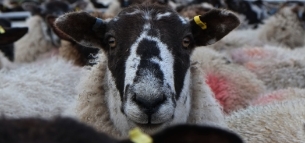Livestock Collection Centres Standards
SITE MANAGEMENT AND CONSTRUCTION Version 4.0
Click to view
Key – Those standards which have greater significance (all other standards are normal)
Recommendation – Those which do not affect certification
New – A completely new standard which the member must now adhere to
Revised – A standard that has changed and requires the member to take some different or additional action to before
Upgraded – The standard has been upgraded to a Key standard or from a Recommendation to a full standard
Appendix – Referenced in ‘How you will be measured’. Indicates that additional information is provided in the Appendices, which are available at the end of each section.
MK.MC.1 Key
The site must be well managed clean, tidy and vermin-free (Revised)
How you will be measured
MK.MC.1.a
MK.MC.2 Key
There must be effective control of vermin (Revised)
How you will be measured
MK.MC.2.a
MK.MC.2.b
Site survey
MK.MC.3
Toxic bait must be used responsibly (Revised)
How you will be measured
MK.MC.3.a
MK.MC.3.b
MK.MC.3.c
- Environmental Risk Assessment
- Bait plan, including a map of bait points and any feed or forage stores
MK.MC.4
Systems are in place to ensure that those delivering livestock have an awareness of arrival and unloading procedures
How you will be measured
MK.MC.4.a
MK.MC.5
All livestock facilities are suitably designed, maintained and constructed
How you will be measured
MK.MC.5.a
MK.MC.5.b
MK.MC.5.c
MK.MC.5.d
MK.MC.5.e
MK.MC.5.f
MK.MC.5.g
MK.MC.6
Walkways and rings must be designed and constructed to allow animals to move freely in the required direction
MK.MC.7
Pens are well-ventilated
How you will be measured
MK.MC.7.a
MK.MC.7.b
Maintenance records
MK.MC.8
Handling facilities, such as crush, crate or race, for checking identification or veterinary inspection are always available, well-maintained and designed to ensure no injuries to animals or personnel (Revised)
How you will be measured
MK.MC.8.a
MK.MC.9
Livestock must be kept in conditions that provide appropriate thermal conditions
How you will be measured
MK.MC.9.a
MK.MC.9.b
MK.MC.10
Field lairages must be equipped with appropriate facilities to deliver welfare needs
How you will be measured
MK.MC.10.a
MK.MC.10.b
MK.MC.11
An isolation pen must be always available for sick or injured livestock (Revised)
How you will be measured
MK.MC.11.a
MK.MC.11.c
MK.MC.12
Milking equipment must be maintained and tested annually
Milking machine annual test report
MK.MC.13
For the livestock facilities, records are kept of any issue that could impact welfare and how the issue was dealt with before the next gathering (Revised)
Maintenance records
MK.MC.14
Dedicated, functioning washing equipment available for the site
How you will be measured
MK.MC.14.a
MK.MC.14.b
Contingency plan for interrupted water supply
MK.MC.15
Facilities are available for effective cleansing and disinfecting of delivery vehicles (Revised)
How you will be measured
MK.MC.15.a
MK.MC.15.b
MK.MC.15.c
MK.MC.15.d
MK.MC.15.e
MK.MC.15.f
- Chemical datasheets
- Dilution rates
